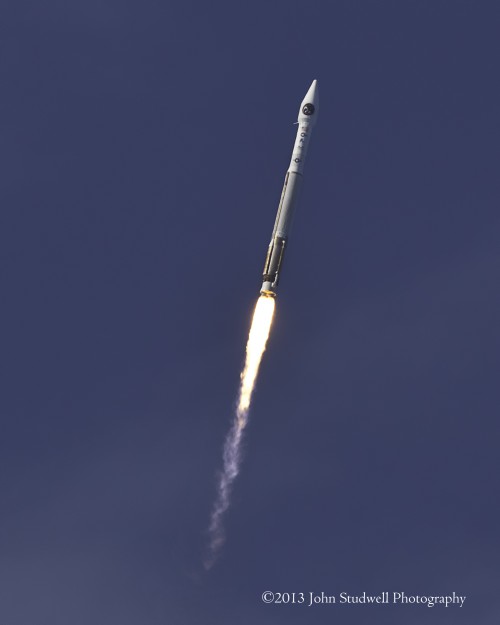
Boeing recently completed wind tunnel testing of a model of the company’s submission in NASA’s Commercial Crew Program. The CST-100 spacecraft itself, however, is not alone in accomplishing objectives on the road to launch. United Launch Alliance’s (ULA) Atlas V also went through tests as part of NASA’s Commercial Crew integrated Capability.
The CST-100 has now completed two of eight performance milestones needed to validate the craft to fly astronauts. The capsule-based spacecraft, which is capable of lofting seven astronauts into orbit, has a total of 19 milestones to meet before it can be given the green light to launch. Boeing hopes to accomplish these requirements by the middle of 2014. Boeing still has 11 milestones to complete before reaching this point.
ULA is a partnership between Boeing and Lockheed-Martin, with Boeing’s Delta IV launch vehicle and Lockheed-Martin’s Atlas V making up most of the firm’s launch vehicle catalog. A key component of the Atlas V also underwent testing as part of efforts to launch crew on a commercial rocket.

The Centaur upper stage, long employed to launch unmanned payloads, was tested to ensure the safety of crews who would use it to fly to orbit. To do so, its oxygen-feed duct line has undergone scrutiny via what is known as a thrust test. During this review, how oxygen moves from the tank to the Centaur’s two engines where it is mixed with hydrogen was studied.
The Centaur upper stage’s history, while extensive, has seen its fair share of problems. Centaur issues have caused the loss of several spacecraft. Although Centaur has launched more than 140 times, its use on NASA’s commercial crew effort would be the first time it would be used to launch people.
“The Centaur has a long and storied past of launching the agency’s most successful spacecraft to other worlds,” said NASA CCP Manager Mango. “Because it has never been used for human spaceflight before, these tests are critical to ensuring a smooth and safe performance for the crew members who will be riding atop the human-rated Atlas V.”
While the Atlas V’s first stage will do the majority of the work getting astronauts out of Earth’s gravity well, the Centaur will be used to propel the CST-100 into its intended orbit.
The wind tunnel tests spanned a two-month time period from March through last month at NASA’s Ames Research Center in Moffett Field, Calif. They marked the first time that scale models of the spacecraft, its launch adapter, and upper stage were tested as a single unit in such a capacity.
This model was then placed into Ames’ 11-foot diameter transonic wind tunnel where it was tested. The information gleaned from these tests will help Boeing to further refine the CST-100 in preparation for flight.
“The CST-100 and Atlas V, connected with the launch vehicle adaptor, performed exactly as expected and confirmed our expectations of how they will perform together in flight,” said Boeing Vice President and Commercial Crew Program Manager John Mulholland.
Under NASA’s commercial crew efforts, three companies are vying to send astronauts to the International Space Station (ISS). Besides Boeing, Space Exploration Technologies (SpaceX), with its highly successful Dragon spacecraft, and Sierra Nevada Corporation, who is planning to use the Dream Chaser spaceplane (and who also has selected the Atlas V as its launch vehicle of choice), are all hoping to begin flights no earlier than 2017.
Want to keep up-to-date with all things space? Be sure to “Like” AmericaSpace on Facebook and follow us on Twitter: @AmericaSpace




I wish them success, but if offered a ride my choice would be Dragon, Dream Chaser and CST-100 in that order. The Centaur bothers me, although I can’t quite put a finger on it.